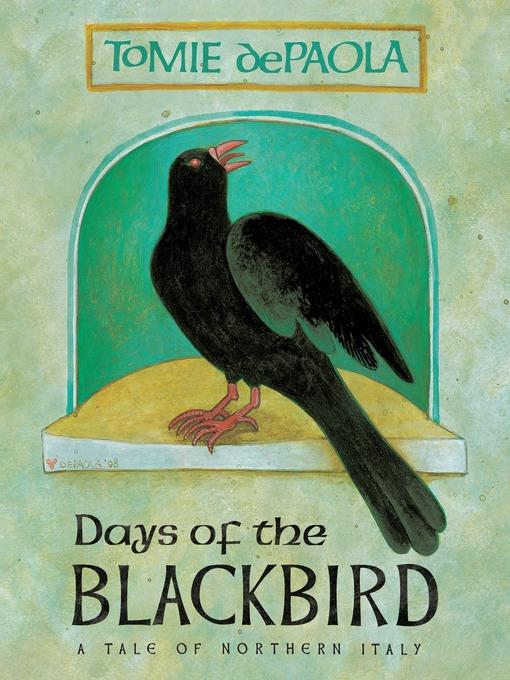
Days of the Blackbird
فرمت کتاب
ebook
تاریخ انتشار
1997
Lexile Score
810
Reading Level
2-4
ATOS
4.2
Interest Level
K-3(LG)
نویسنده
Tomie dePaolaشابک
9780525518099
کتاب های مرتبط
- اطلاعات
- نقد و بررسی
- دیدگاه کاربران
نقد و بررسی

December 30, 1996
In Northern Italy, legend has it that the weather is so cold during the last three days of January that the white doves that take shelter in the chimney tops emerge black from soot. The Italians call this time of year "Le Giornate della Merla" (the Days of the Blackbird), and thereby hangs a tale-or, at least, it has inspired dePaola to create this well-seasoned offering. As he explains in an afterword, his story is a sort of Italian "Emperor's Nightingale," featuring a duke, his devoted daughter and a particularly beautiful white dove whose sweet song sustains the nobleman through a long winter of illness. DePaola spins the tale with panache, imbuing it with a folktale-like timelessness, and artistically it's clear he was delighted to return once again to his beloved Italy for visual cues. The pages radiate warmth, from the picturesque late medieval setting and the terra cotta or blue-green houses with their tiled roofs, to the jewel-colored birds and flowers of the duke's garden. A sprinkling of Italian words and phrases adds an authentic flavor. Ages 4-8.

Starred review from March 1, 1997
K-Gr 4-An original folktale with roots in a winter legend from northern Italy. A wise, benevolent Duke lives with his daughter, Gemma, in a house in the middle of town. The two spend much time in their courtyard listening to the exuberant songs of birds of many colors. When the Duke is stricken with a life-threatening illness, a pure white bird, La Colomba, remains through the harsh winter, singing outside the man's window. Seeking brief respite from the cold in chimney tops turns its feathers solid black. La Colomba is never again pure white, but the Duke regains his health, declaring the coldest days of January the "Days of the Blackbird." The moving story is elegantly, yet simply, told. The artist combines his recognizable style with visual elements reminiscent of Italian frescoes. Watercolor background washes create a marbleized effect. Color choices portray the warmth and serenity the story suggests. A successful and satisfying union of narration and illustration.-Heide Piehler, Shorewood Public Library, WI

March 15, 1997
Ages 5^-8. In the mountains of northern Italy, the last three days of January, considered the coldest of the year, are known as "Le Giornate della Merla," The Days of the Blackbird. DePaola creates a story of a faithful white bird, La Colomba, who stays through the bitter cold, singing for a gravely ill duke to help him recover. Duca Gennaro's daughter has tried to entice all the songbirds to stay, putting out plates of seed and suet and wool-lined baskets, but with each temperature drop, more birds leave until finally only La Colomba is left. To stay warm enough to sing, La Colomba nests in the sooty chimney and becomes forever a blackbird. DePaola's story and illustrations are stately, more somber in tone and coloring than his usual style, but this tale of steadfast devotion is rich and conveys the delights of spring after a long, difficult winter. ((Reviewed March 15, 1997))(Reprinted with permission of Booklist, copyright 1997, American Library Association.)

























دیدگاه کاربران